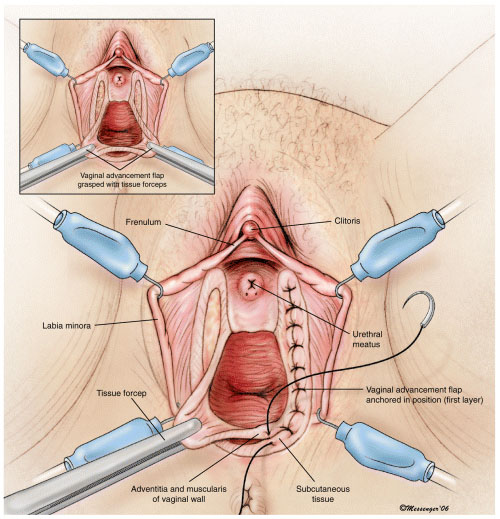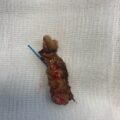What is Vestibulectomy?
Vestibulodynia and Vulvar Vestibulitis Syndrome (VVS) are conditions that significantly affect the lives of countless women. These chronic disorders are characterized by pain in the vulvar vestibule, the entrance to the vagina. The pain can range from burning and stinging sensations to discomfort during intercourse, and the emotional and psychological toll on affected individuals is considerable.
In this comprehensive guide, we will delve into the world of vestibulectomy, a surgical treatment option, offering insights into its indications, surgical procedures, recovery, and the impact on patients’ lives.
Definition and Prevalence
Vestibulodynia and VVS are chronic conditions that cause persistent pain in the vulvar vestibule, leading to substantial discomfort. They affect women of all ages, although the prevalence of these conditions is often underestimated. This underreporting may be due to the personal nature of the symptoms and the stigma surrounding discussing sexual health issues openly. Vestibulodynia and VVS can significantly impair a woman’s quality of life, leading to physical and emotional suffering.
Non-Surgical Treatment Options
Before considering surgery, patients are typically encouraged to explore non-surgical treatment options. These options are crucial in the management of vestibulodynia and VVS. They may include the following:
- Physical Therapy: Physical therapy may involve pelvic floor exercises and relaxation techniques. A trained physical therapist can work with the patient to help alleviate muscle tension and reduce pain in the vulvar vestibule.
- Behavioral Therapy: Behavioral therapy, including cognitive-behavioral techniques, can be beneficial in managing the psychological aspects of pain. It helps patients cope with the emotional toll of these conditions.
- Topical Medications: Topical medications, such as lidocaine or estrogen creams, can be used to manage local symptoms and provide temporary relief.
It is essential to note that the success of these non-surgical treatments can vary among patients. While some individuals experience significant relief, others may find these treatments provide limited or no improvement.
Patient-Centered Care
One key aspect of treating vestibulodynia and VVS is patient-centered care. This approach involves understanding the individual needs of each patient and tailoring a treatment plan to their unique circumstances. This personalized approach is vital because the experience of vestibulodynia and VVS varies from person to person. Factors such as the severity of pain, psychological impact, and lifestyle considerations all play a role in determining the most suitable treatment plan.
Vestibulectomy: When Is It Considered?
Vestibulectomy is not the first-line treatment for vestibulodynia and VVS. It is usually considered when conservative treatments have failed to alleviate the symptoms, and the pain persists, significantly impacting the patient’s quality of life. A crucial aspect of the surgical process is patient consultation. Patients must be well-informed about the procedure, its potential outcomes, and the associated risks. Shared decision-making is essential, and patients should be actively involved in the decision to proceed with surgery.
Preparing for Vestibulectomy
Before undergoing vestibulectomy, patients go through a thorough pre-operative assessment. This assessment includes physical examinations, medical history, and psychological evaluations. Clear and compassionate patient counseling is of utmost importance. This counseling addresses the procedure, its potential outcomes, and what patients can expect during their post-operative journey.
Surgical Techniques
Vestibulectomy can involve various surgical techniques, with the primary goal of removing the painful tissue while preserving normal anatomy. Two common approaches to vestibulectomy are partial and complete vestibulectomy:
- Partial Vestibulectomy: In a partial vestibulectomy, only a portion of the vestibule’s tissue is removed, particularly the area responsible for the pain. This approach aims to preserve as much of the normal anatomy as possible while providing relief.
- Complete Vestibulectomy: A complete vestibulectomy involves the removal of the entire vestibule’s tissue. This approach is considered in cases where the pain is more widespread, and partial removal may not provide sufficient relief.
Patients should be aware of the goals of the procedure, which include reducing or eliminating pain in the vulvar vestibule and enhancing their overall quality of life.
Risks and Complications
As with any surgery, vestibulectomy comes with potential risks and complications, including:
- Infection: Surgical site infections can occur, but they are typically rare when proper sterile techniques are followed.
- Bleeding: There may be bleeding during or after the surgery, but this is usually managed by the surgical team.
- Scarring: Scarring is a natural outcome of surgery. The extent of scarring can vary from patient to patient.
- Changes in Sensation: Some patients may experience changes in sensation in the vulvar area following surgery, but this is not a guaranteed outcome.
Selecting a surgeon experienced in performing vestibulectomy is crucial to minimize these risks. Experienced surgeons are familiar with the nuances of the procedure, leading to a higher likelihood of a successful outcome with minimal complications.
Recovery and Post-Operative Care
After undergoing vestibulectomy, patients can expect a period of recovery. This recovery phase includes pain management, wound care, and monitoring for any signs of infection. The surgical team will provide detailed post-operative instructions, and it is crucial for patients to follow these instructions carefully to ensure a smooth recovery.
Resuming Activities
Gradually resuming normal activities is part of the post-operative process. Patients may initially experience discomfort, but this should improve over time. It’s essential for patients to communicate openly with their healthcare team about any concerns or issues they encounter during the recovery period.
Success Rates and Patient Satisfaction
Vestibulectomy has shown success in alleviating pain for many patients. Comparing the success rates of this surgical approach with non-surgical methods can provide valuable insights into its effectiveness. While individual experiences may vary, hearing from patients who have undergone vestibulectomy can shed light on the emotional and psychological impact of the procedure.
Many individuals report significant improvements in their lives and relationships following successful vestibulectomy. They often experience reduced pain and an enhanced overall quality of life, which can have a profound effect on their well-being and self-esteem.
Alternative Treatment Options
For those who are hesitant about surgery or wish to explore other options, interdisciplinary care and holistic approaches can be considered. Interdisciplinary care involves a team of healthcare professionals, such as gynecologists, physical therapists, and psychologists, working together to develop a comprehensive treatment plan tailored to the patient’s needs.
Holistic approaches may include lifestyle modifications, dietary changes, stress management techniques, and alternative therapies. The importance of tailoring treatment plans to each patient’s specific needs and preferences cannot be overstated. A personalized approach is key to success.
Potential Challenges
While many patients experience relief after vestibulectomy, it’s important to acknowledge potential challenges, including psychological and emotional aspects. Dealing with chronic pain and the emotional toll of vestibulodynia and VVS can be challenging, and patients may benefit from psychological support and counseling before and after surgery.
Follow-Up Care
Regular follow-up appointments and ongoing care are essential to monitor progress and address any persistent symptoms or concerns. The surgical team will work closely with the patient to ensure a smooth transition from the post-operative period to long-term management.
Conclusion
In conclusion, vestibulectomy is a surgical option that can offer hope and relief to those suffering from vestibulodynia and VVS when conservative treatments have not been successful. It is essential to explore all treatment options and make informed decisions to improve the quality of life for individuals affected by these conditions.
As research and medical advancements continue, the future of treatment for vestibulodynia and VVS holds promise. Continued patient-centered care and a commitment to understanding these conditions are paramount. With a comprehensive approach to treatment, patients can find relief and regain their quality of life. Vestibulectomy is one of the options in this journey, offering a chance for a brighter, pain-free future for those who have suffered from these conditions.





